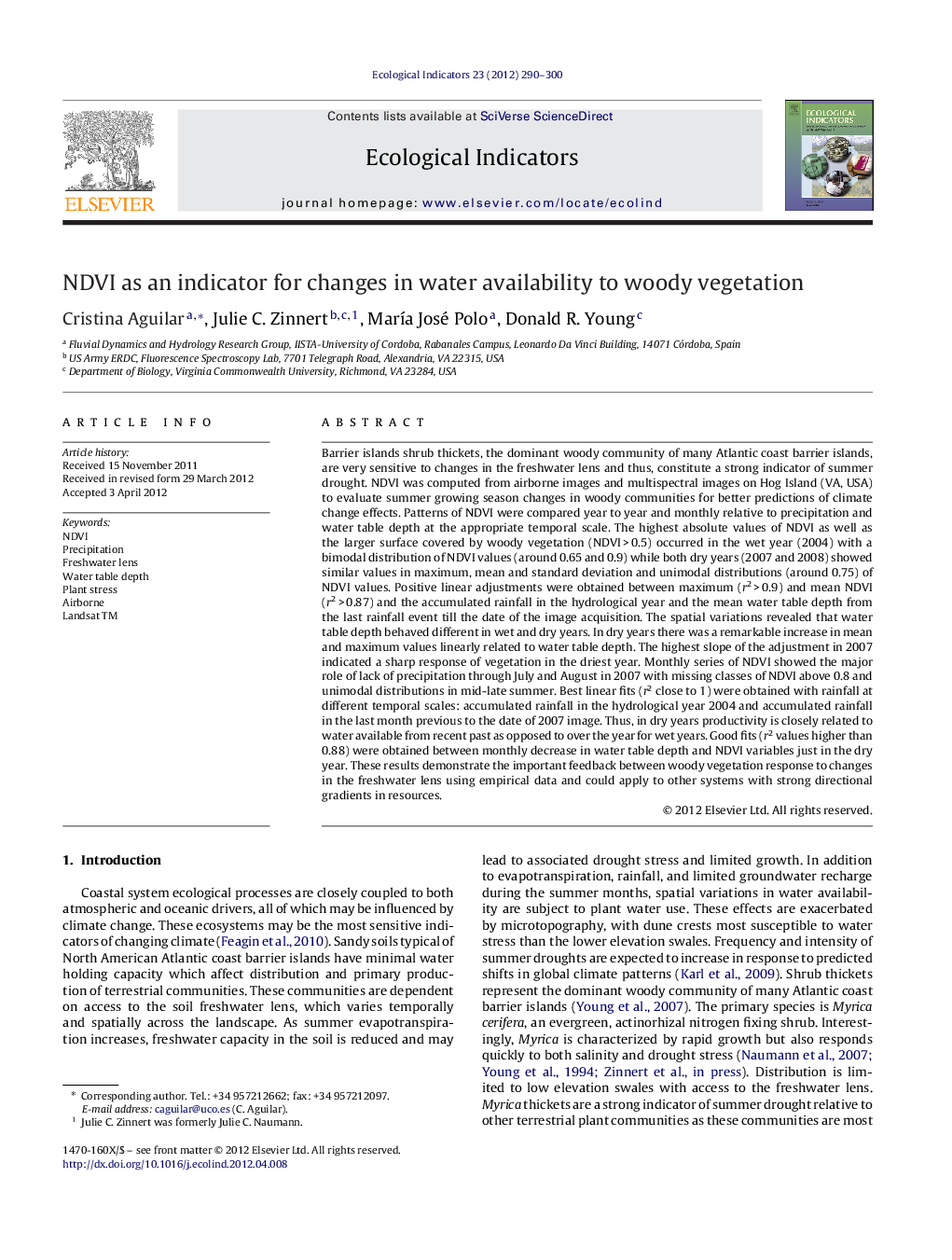| Article ID | Journal | Published Year | Pages | File Type |
|---|---|---|---|---|
| 6295578 | Ecological Indicators | 2012 | 11 Pages |
Barrier islands shrub thickets, the dominant woody community of many Atlantic coast barrier islands, are very sensitive to changes in the freshwater lens and thus, constitute a strong indicator of summer drought. NDVI was computed from airborne images and multispectral images on Hog Island (VA, USA) to evaluate summer growing season changes in woody communities for better predictions of climate change effects. Patterns of NDVI were compared year to year and monthly relative to precipitation and water table depth at the appropriate temporal scale. The highest absolute values of NDVI as well as the larger surface covered by woody vegetation (NDVIÂ >Â 0.5) occurred in the wet year (2004) with a bimodal distribution of NDVI values (around 0.65 and 0.9) while both dry years (2007 and 2008) showed similar values in maximum, mean and standard deviation and unimodal distributions (around 0.75) of NDVI values. Positive linear adjustments were obtained between maximum (r2Â >Â 0.9) and mean NDVI (r2Â >Â 0.87) and the accumulated rainfall in the hydrological year and the mean water table depth from the last rainfall event till the date of the image acquisition. The spatial variations revealed that water table depth behaved different in wet and dry years. In dry years there was a remarkable increase in mean and maximum values linearly related to water table depth. The highest slope of the adjustment in 2007 indicated a sharp response of vegetation in the driest year. Monthly series of NDVI showed the major role of lack of precipitation through July and August in 2007 with missing classes of NDVI above 0.8 and unimodal distributions in mid-late summer. Best linear fits (r2 close to 1) were obtained with rainfall at different temporal scales: accumulated rainfall in the hydrological year 2004 and accumulated rainfall in the last month previous to the date of 2007 image. Thus, in dry years productivity is closely related to water available from recent past as opposed to over the year for wet years. Good fits (r2 values higher than 0.88) were obtained between monthly decrease in water table depth and NDVI variables just in the dry year. These results demonstrate the important feedback between woody vegetation response to changes in the freshwater lens using empirical data and could apply to other systems with strong directional gradients in resources.
⺠Barrier island shrub tickets strong indicators of summer drought. ⺠Annually, increasing NDVI statistics with rainfall and water table level. ⺠Monthly fits NDVI vs. groundwater in dry years when freshwater lens is major source. ⺠Feedback between woody vegetation to changes in groundwater using empirical data. ⺠Simple metrics to predict vulnerable coastal areas to climate change effects.
